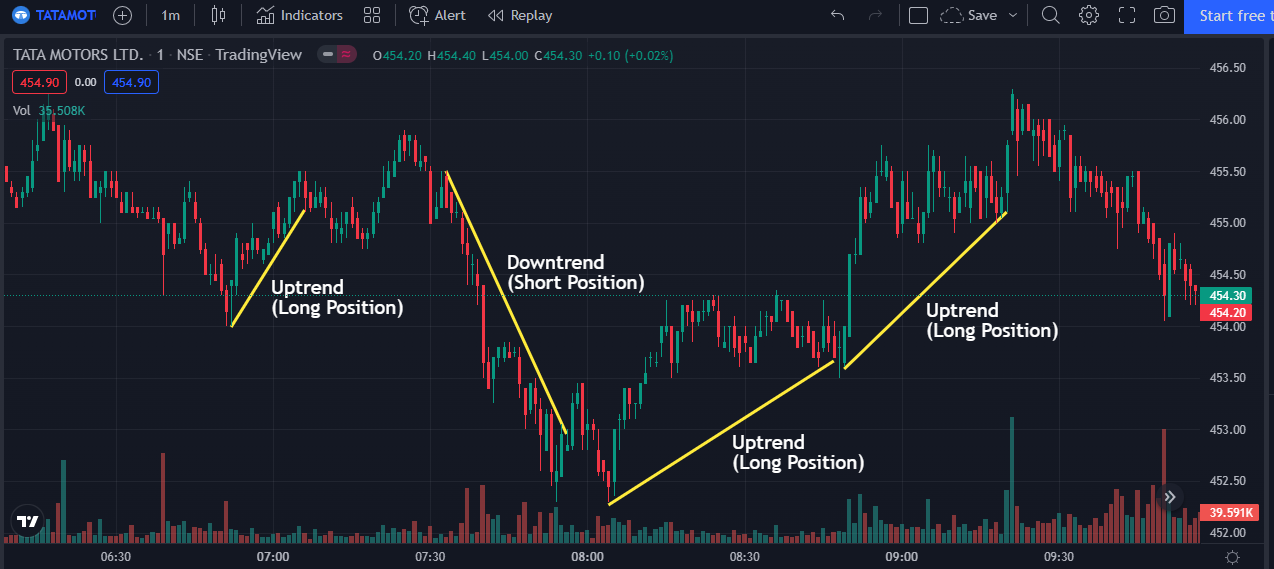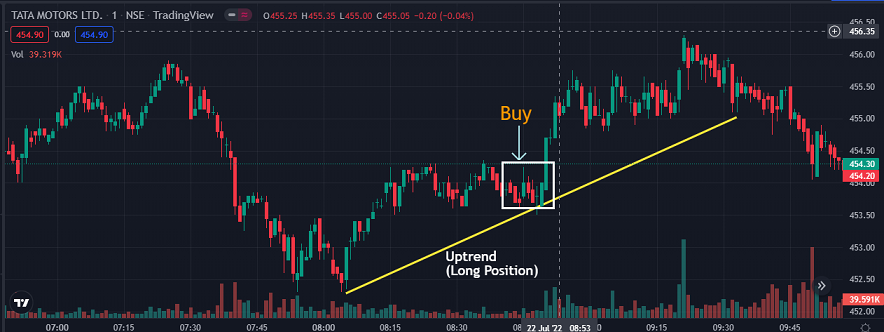Everyone nowadays wants to earn instant profit and therefore they opt for intraday trading. But how to make money from intraday trading? Well, for this the most important step is to learn how to select stocks for intraday.
There are few important parameter that you must consider while choosing the right stock and here is the way.
Let’s get started.
How To Select Stocks for Intraday Trading in India?
Intraday trading is completely different from long-term investment and therefore the process of choosing stocks for day trading also differs.
Here the trader should look for the stock that has high volatility and gives the benefit of earning profit with multiple trades during the day.
In all the stock selection process should begin after gaining an understanding of how intraday trading works?
Once you understand the working process and the in-depth meaning of intraday trading you can start looking for the right stocks by following the rules below.
1. Choose Liquid Stocks
Most of beginner traders consider capital to trade and try to do intraday trading with 100 rupees or less those low capital stocks are highly risky and have low liquidity that often becoming a reason for big losses to traders.
Here, liquid stocks are those stocks that are traded in large volumes without having a major impact on their price.
Such stocks give traders an opportunity to trade in bulk and earn a potential profit with a minor shift in stock price.
In all, the liquidity of a stock is important for two reasons:
- You can buy or sell a liquid stock without impacting the ongoing trend you want to benefit from i.e. a downtrend or uptrend.
- The trades with liquid stocks can be executed quickly. As an intraday trader, the precise time of trade execution is paramount for you.
Delay in trade execution can cause massive losses to traders.
2. Look for Volatility
When it comes to earning profit from intraday trading, it becomes important to pick stocks with good price movement.
But sometimes high volatility of stocks is difficult to analyze and that can lead to losses in trade. It is therefore recommended to pick stocks with a volatility of around 3%.
You can easily filter such stocks using the Screeners app or other learned strategies. Further you can select stocks by using volatility and other intraday trading indicators.
3. Trade in Correlated Stocks
Now there are some stocks that are directly impacted by a sectoral or index movement. So, if the index is making new highs or lows then these stocks will show a similar movement.
So, if someday the index is rising then one can look for the mirror sectors and stocks and take a long position to execute the trade.
4. Define the Entry or Exit Price
Now not only is it challenging for traders to take the right position but also to exit from the current position.
Sometimes greed, delayed analysis, and other factors lead to failure in taking the right call during a trade.
To make this simpler, it is important to take a position according to the current trend. So, if the market is bullish, one must consider taking a long call and a short position in case of a bearish market.
To determine the trend you can draw a trend line that gives you an idea of the current market condition.
5. Pick Strong Stocks During Uptrend and Weak Stocks During Downtrend
Apart from the trend, you can further define your entry or exit strategies by segregating the stocks as strong and weak.
Strong stocks are the stocks that follow the direction of the market strongly. For example, if the market rises by 1% points, the strong stock will rise by 2 or 3%.
In contrast to this weak stocks tend to rise or fall slowly according to the direction of the market.

Other than this, one can analyze the futures market. Change in the futures price of the stock has a direct impact on the stocks but at the same time, there are stocks that are not much impacted even if the futures price drops.
It is therefore recommended to trade and take a long position in such stocks.
So a best practice followed by all traders is selecting a strong stock in an uptrend and choosing a weak stock in case of a downtrend to stem the potential of loss.
But it is advised to avoid trading at all in a weak or no-trend market because the market may not be in trend always.
6. Be Patient and Wait for a Pullback
Sometimes traders try to ride a high price wave and volatility can cause the market to swing downwards.
So a trader should not panic if such a situation occurs. It would be best to take a long position, be patient and wait for a pullback which can happen anytime during day trading.
You have to look at price waves. Trendlines are a handy tool to see where a price wave will begin or end. So while you are selecting a stock for intraday trading you can use a trendline to enter early into the next price wave in the direction of the trend.
If you consider entering a long position buy when the price moves toward the trend line.
An uptrend line is drawn by joining the rising bottoms (higher highs) of the chart in a straight line.
Short selling downward will be similar. A downtrend slope line is drawn by joining the falling bottoms (lower lows) of the chart in a straight line.
You will have to wait until the price moves up to a downtrend sloping line and when the stock price begins to fall, you can use this as a trading signal to enter.

These two long trades give a low-risk entry. As we have mentioned earlier trends do not continue indefinitely so is true about losing trades.
So always be patient and be prepared for adverse market trends.
7. Take Regular Profits
Day trading requires quick execution as traders have limited time to take profits. Also, traders should not get involved in losing trades or trades that are moving in the wrong direction for longer periods.
So we are introducing you to two golden rules for taking profits with day trading.
In an uptrend execute trade slightly above the previous price high to take profit in the ongoing trend.
In a downtrend execute trade slightly below the previous price low to take profit in the current trend.
Conclusion
When it comes to ‘Is Intraday trading profitable‘ there is not a straightforward answer to this. However, in comparison to other formats of short-term trading, Day trading is a risky but one of the most profitable trade segments.
With a good knowledge of the stock market and the ways how to select stocks for intraday trading mentioned above, a trader can manage to garner profits even on a trade-losing day.
Conscious decisions taken at an appropriate moment can save an intraday trader’s day.
In case you’d like us to call you back to explain more about stock market learning, just leave your contact info below:
Before investing capital, invest your time in learning Stock Market.
Fill in the basic details below and a callback will be arranged for more information:








